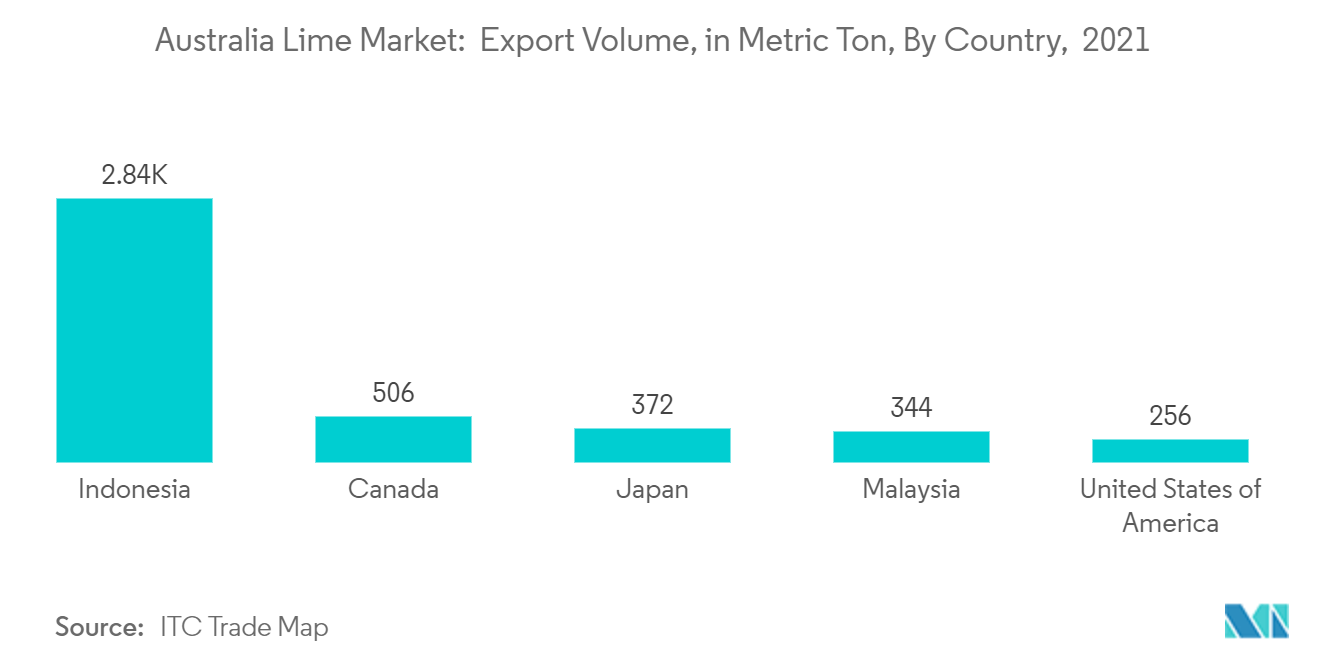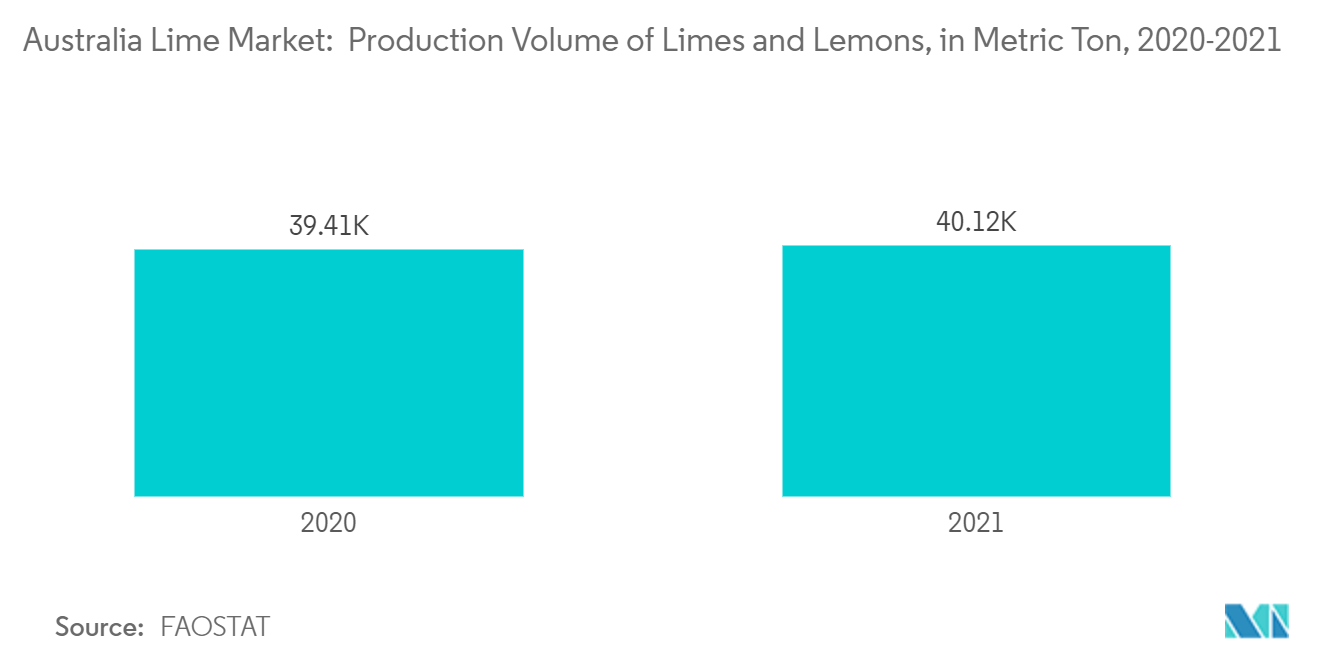Market Trends of Australia Lime Industry
Unique Health Benefits of Lime is Driving Australia Exports
- Lime is a fruit that has several unique health benefits. Lime is an excellent source of vitamin C, a powerful antioxidant that helps to protect the body from damage caused by harmful free radicals. Vitamin C also supports the immune system, helps the body absorb iron from plant-based foods, and plays a crucial role in collagen production, essential for maintaining healthy skin, bones, and blood vessels. Overall, the unique health benefits of lime make it a great addition to a healthy and balanced diet. As consumers become more health-conscious and aware of the benefits of consuming nutrient-dense foods, the demand for lime and other healthy fruits will likely continue to grow.
- Australia is increasing its export of limes, with the government encouraging farmers to export limes. Only 4% of Australian limes are exported, with 87% sold on the domestic market. Seasonal market behavior has increased with time-specific consumption of lime and lime products, keeping the market in line and moving forward. According to the International Trade Center (ITC) Trade Map, Indonesia was Australia's major importer of lemons and limes, with 2,838 metric tons in 2021.
- The higher prices in international markets, increase in the policy initiatives such as reduction in tariffs, especially concerning Indonesia, and accessible markets to export concerning Singapore and Hong Kong are expected to drive the lemon and lime exports during the forecast period. Indonesia-Australia Comprehensive Economic Partnership Agreement has enabled the export of various agricultural products like oranges and limes with increased duty-free access and has paved the way for more excellent trade opportunities.

Production and Import Analysis of Limes
- Lime is a climate-sensitive crop, and adverse weather conditions can significantly impact its production. Australia has experienced various extreme weather events in recent years, including droughts, floods, and heat waves, which can all affect lime production.
- Additionally, the COVID-19 pandemic impacted global supply chains and disrupted trade flows, affecting lime production and export in Australia. Lime production accounted for 39.7 thousand tons in 2018, which reduced to 39.4 thousand tons in 2020.
- According to the Bureau of Meteorology, 2018 was the third hottest year of Australia, and in addition to it, November 2019 rainfall was the lowest on record for Australia. But the production increased in 2019 by 4% compared to 2018. The pandemic decreased production in 2020 in the country by 4.6% compared to 2019. The production increased in 2021 and is expected to grow during the forecast period. However, Australia imports lime from the United States, Egypt, and Spain to meet the domestic demand. The imports exponentially increased 2020 by 60.3% compared to 2019 due to the country's reduced production.
- Egypt is expected to be a significant exporter during the forecast period. Lately, Australia is witnessing an increase in lemon plantings, as well as an increase in new growers entering the industry, according to Citrus Australia. With the rise in lemon plantings and new growers entering the industry, Australia has an excellent opportunity to capitalize on this demand and export its high-quality produce to international markets. Australia's strong reputation for delivering high-end produce is a significant advantage in the global market. Consumers worldwide are becoming increasingly concerned about food safety and quality. They are willing to pay a premium for products that have undergone rigorous inspections along all supply chain stages. Australia can position itself as a top player in the global lemon market by ensuring its produce meets these high standards.


